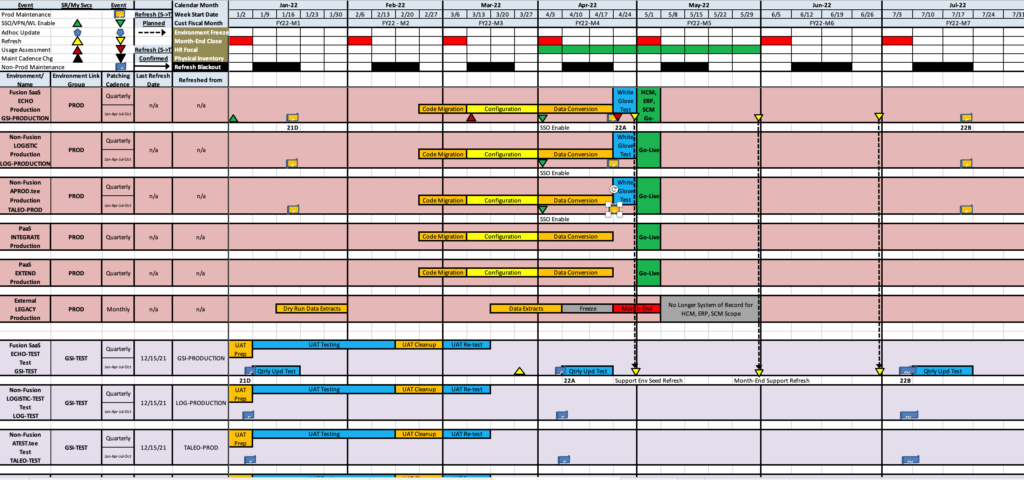Investing in the Cloud: Understanding the Essentials of Oracle Cloud Applications

As a team with over 300 years of combined experience in Oracle, we at KNEX understand the importance of transferring best practices for running businesses on Oracle Cloud Applications (OCA). Our motto, ‘Simplify the Complex’, reflects our commitment to making the complexities of Oracle Cloud Solutions more manageable. We aim to demystify the notion that OCA cannot be tailored to meet specific business needs. In this three-part blog series, I will introduce the fundamentals of running Oracle Cloud Applications. This advice is relevant not only to organizations preparing to transition to Software as a Service but also to those currently operating on OCA.
It wasn’t long ago that CEOs wouldn’t consider moving their accounting or manufacturing systems to the Cloud. However, a recent survey highlights the current challenges faced by Chief Information Security Officers (CISOs) in managing cloud services. According to the survey, 69% of CISOs reported an increase in the number of critical cloud services they use compared to the previous year, and 40% are struggling with detecting and reacting to security incidents in the cloud. Let’s go through some of the basics of Oracle Cloud ERP.
Planning your flight to Oracle Cloud ERP
Many organizations that are moving to Oracle Cloud SaaS currently use on-premises software such as Oracle E-Business Suite or other ERP systems. When planning to transition to the cloud, the first change you’ll notice is in the payment structure. Instead of one-time licenses with annual support fees, you’ll have a monthly expense based on the number of users or other metrics depending on the module. You can choose a 1-year to a 5-year subscription contract, but it’s essential to understand the terms with an experienced Oracle representative or advisor.
Another significant shift is that you won’t have control over the hardware. This means you don’t need to worry about monitoring the database or application since Oracle will manage the Fusion Applications architecture. However, you’ll need a hyper care or support services agreement to handle service requests.
Data residency is another important aspect to consider before enabling your point of delivery (POD). You’ll need to specify the geo-region when placing your service order with Oracle since SaaS applications are provisioned in the designated region. Note that the home region isn’t the provisioning location, so it’s important to plan accordingly.
Creating non-production environments is also out of your hands when subscribing to Oracle Cloud Applications. By default, the service order includes only two PODs: Production and TEST. You can order additional environments as needed, and they will be managed by Oracle. From the Oracle Cloud Console, you can manage different PODs, but Oracle will handle tasks such as cloning and upgrading.
An Oracle Cloud Applications implementation and day 2 (after go-live) involve many activities, milestones, and tight coordination between multidisciplinary teams. Therefore, an environment plan is critical for your long-term SaWhen implementing Oracle Cloud Applications and during day 2 operations (after the go-live), several activities, milestones, and cross-functional team coordination are involved. Therefore, it’s crucial to have an environment plan as part of your long-term SaaS strategy. This plan should include a calendar with essential dates for each POD, such as:
- Milestone testing events
- Configuration tasks
- Data Conversion tasks
- Custom Object Installations
- Maintenance blackout periods
- Schedule refreshes (T2T, P2T)
It is recommended to use a template provided by Oracle (Doc ID 2848566.1) that has a sample of the best practice for your Oracle Cloud Environment Management Plan.

No more than a year ago, Oracle released the ability to build and extend Fusion Applications with Visual Builder Cloud Service (VBCS) within Fusion. No matter which module your organization is running on, you can design, develop and deploy extensions for Fusion SaaS applications by leveraging Oracle’s cutting-edge OCI technologies, focusing on serverless and/or cloud-native technologies. These include Oracle Visual Builder Studio (VBS), the preferred tooling for the extension of Oracle Cloud Applications, and Oracle Application Express (APEX). Some Oracle Partners and System Integrators have built solutions that run on top of Oracle Cloud Applications, seamlessly integrated into the ERP or SCM modules.

In this post, we shared the roots for getting the right foot into the Oracle Cloud Applications world, but this is just the preparation. In the next post, we’ll double-click on the security aspects of your implementation.
